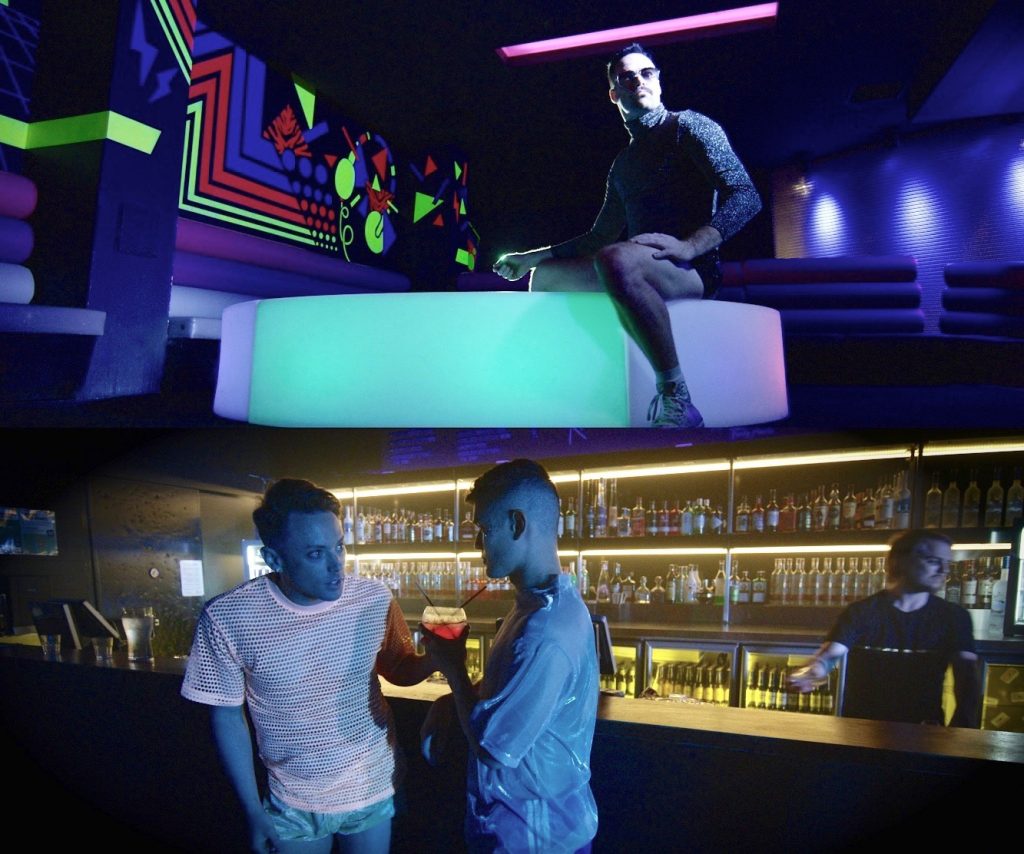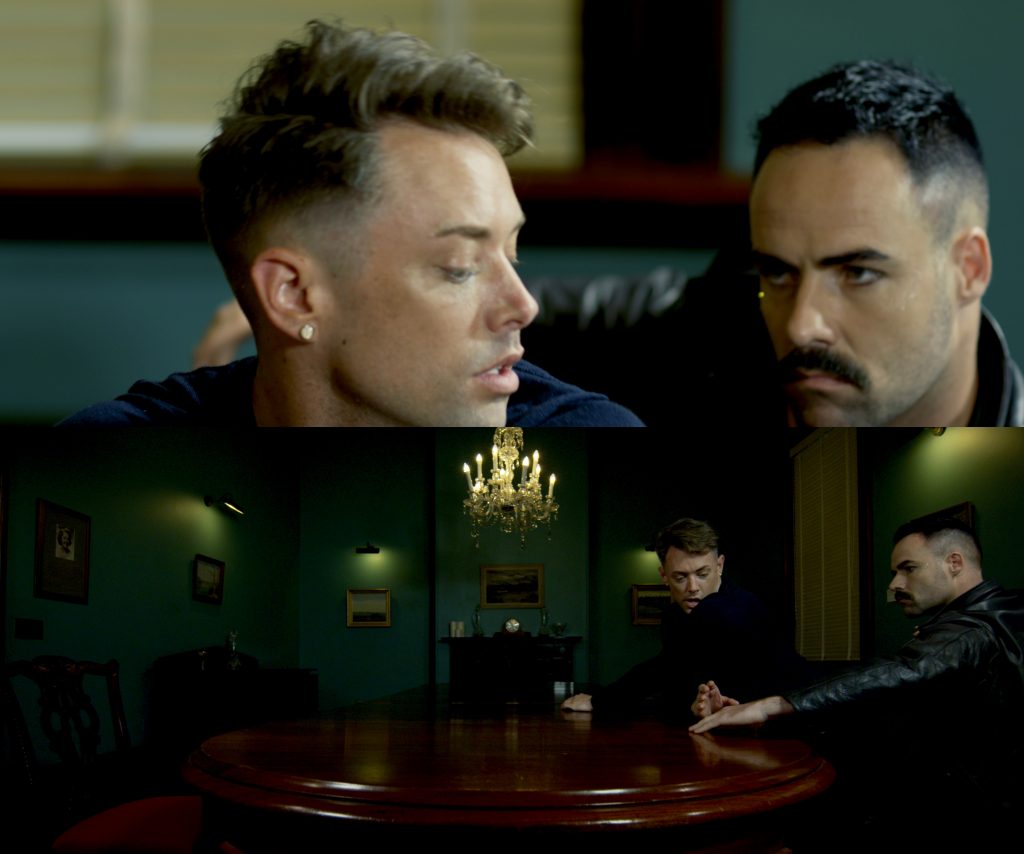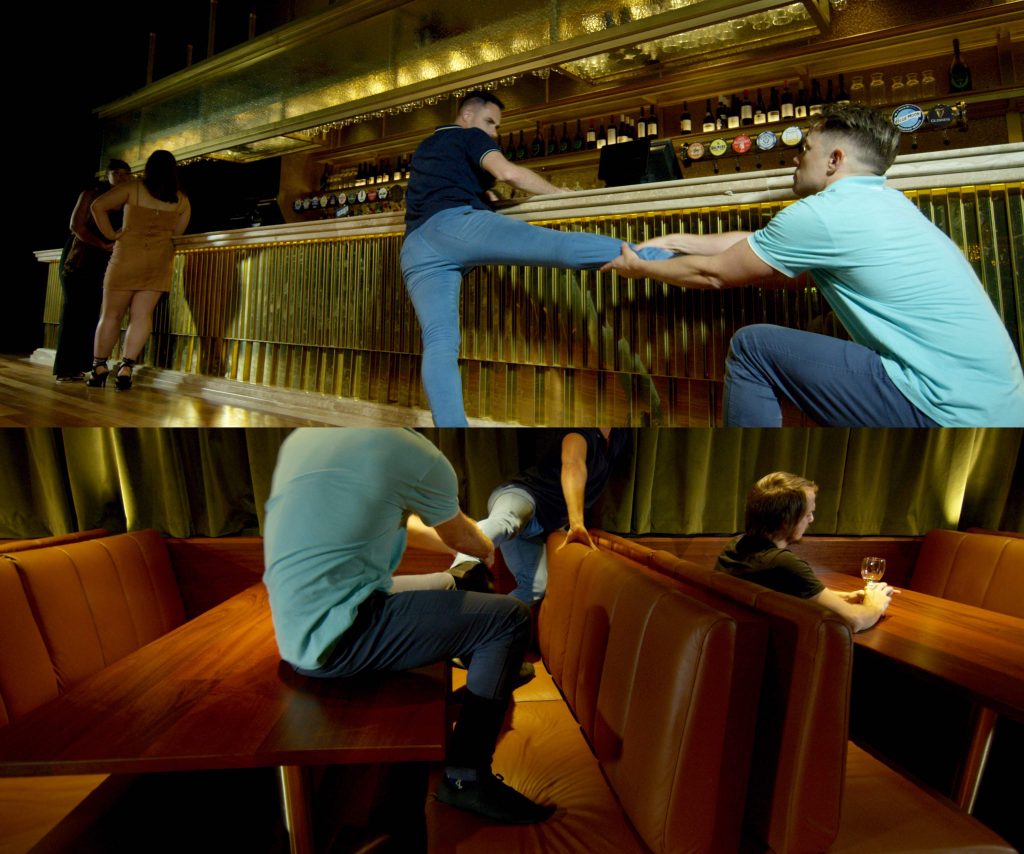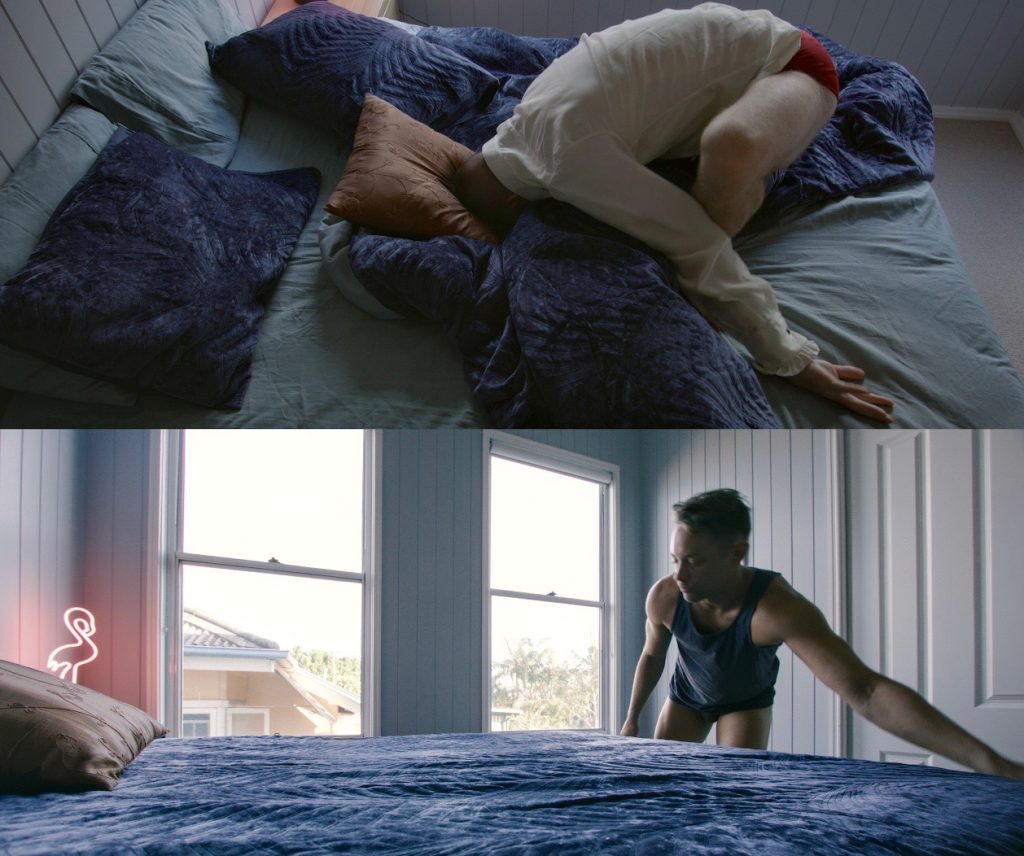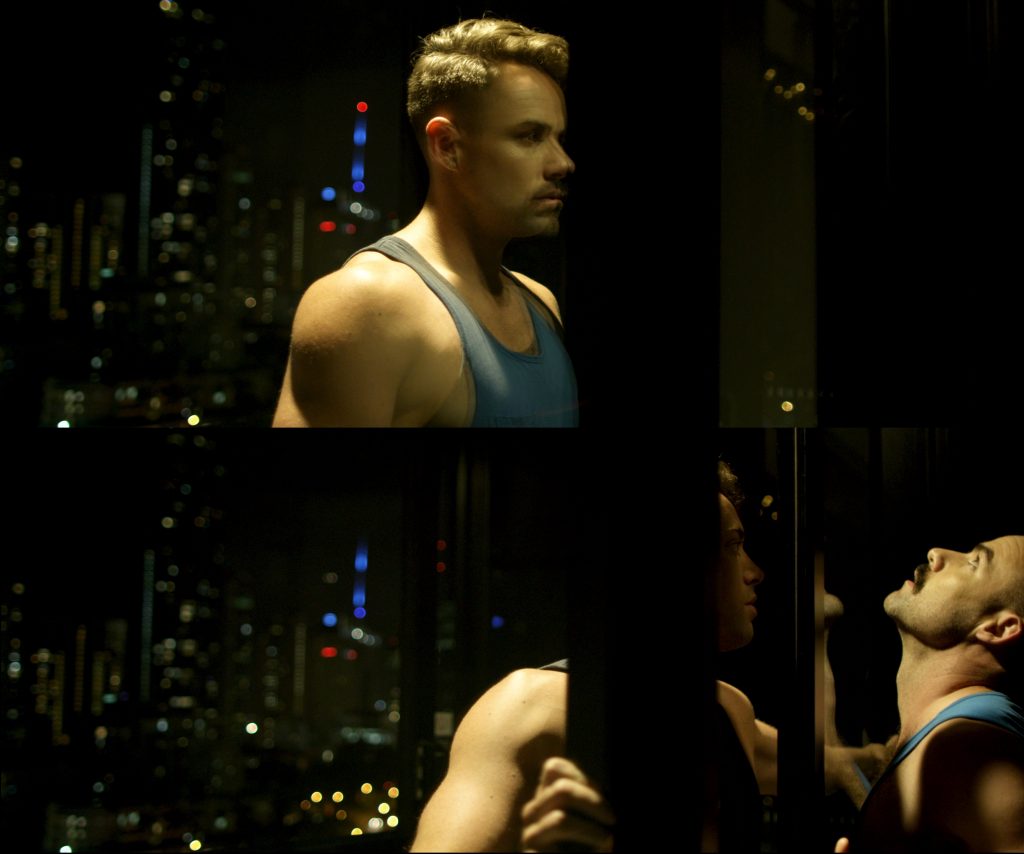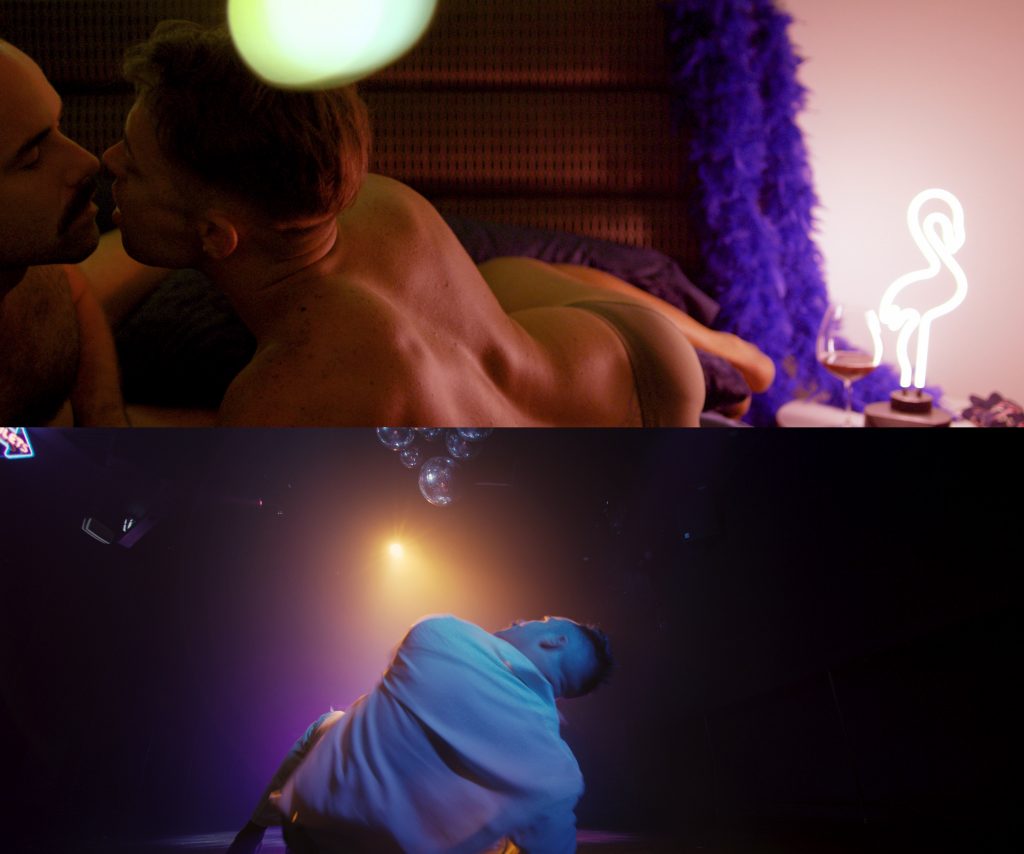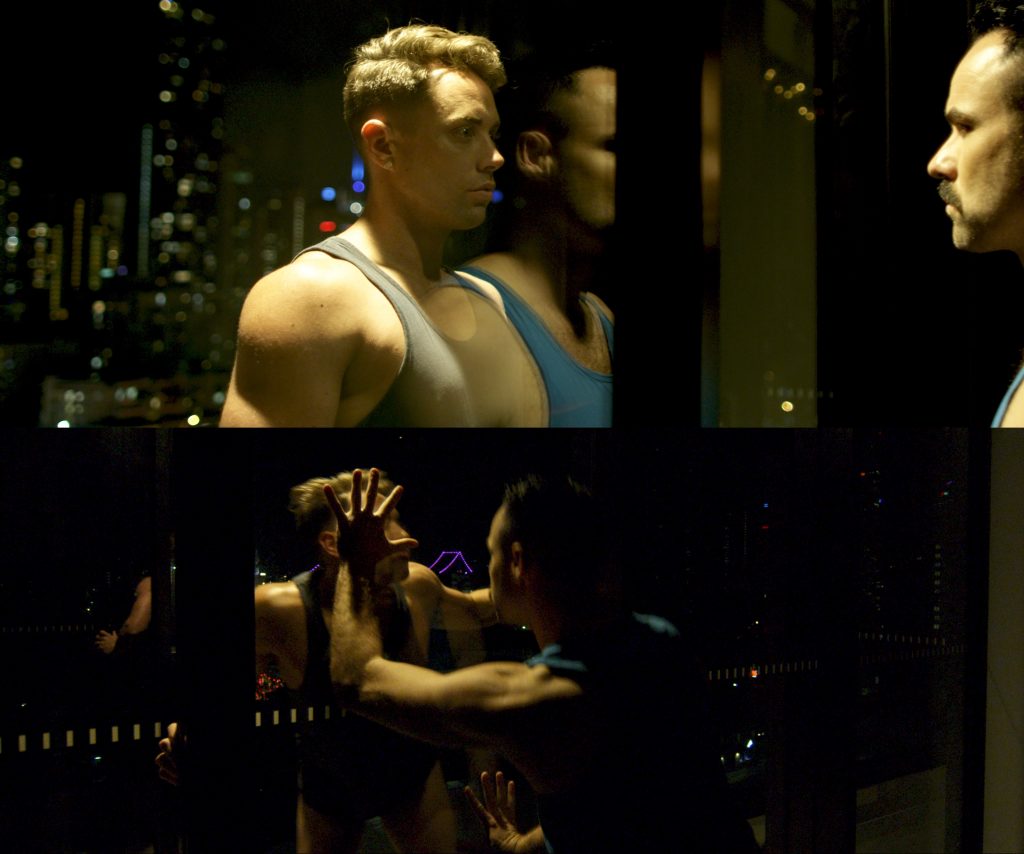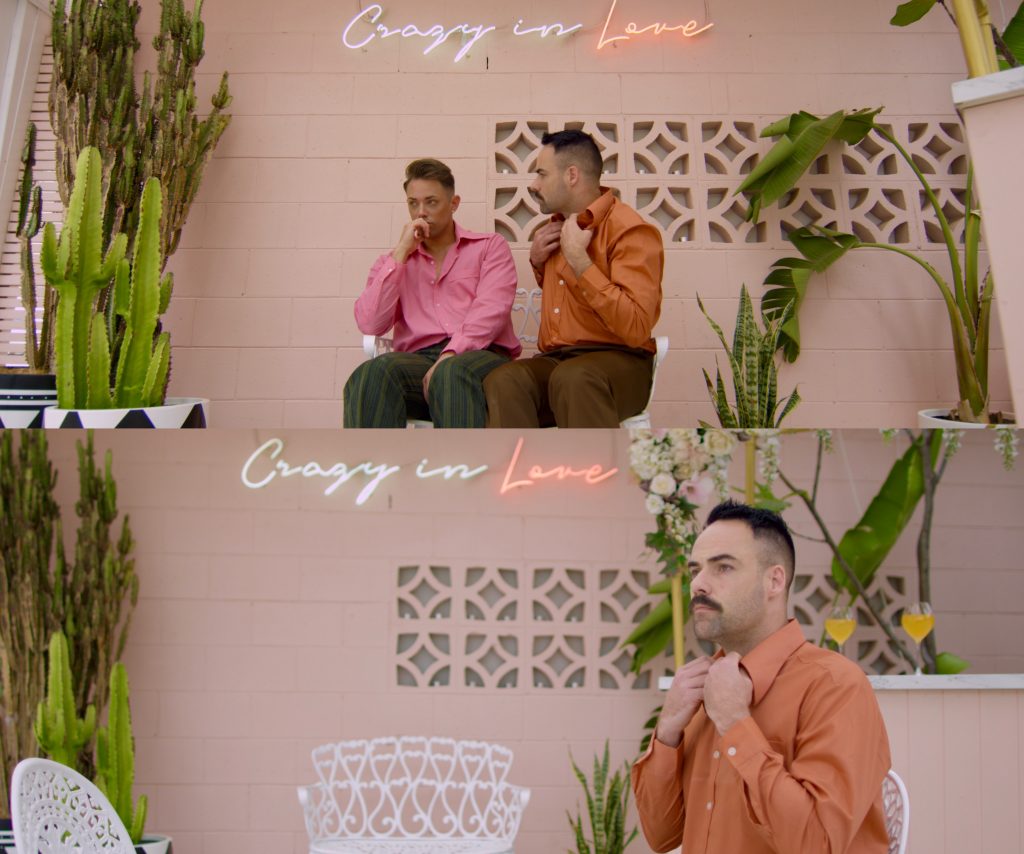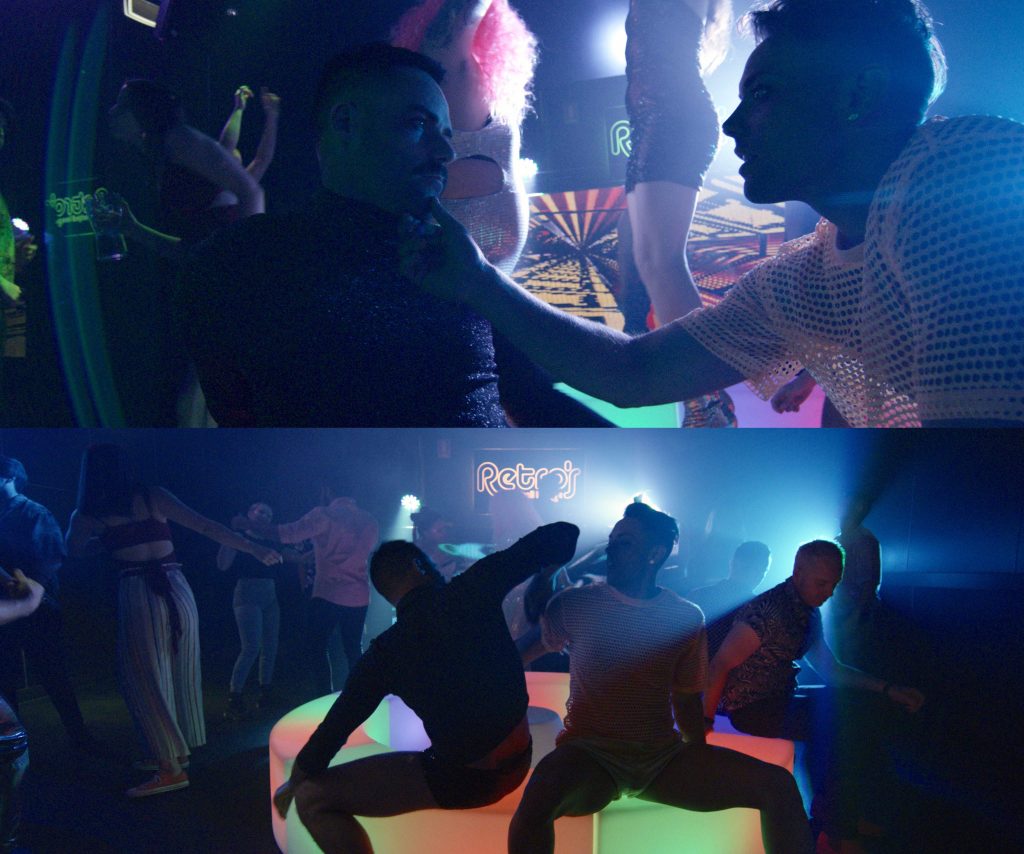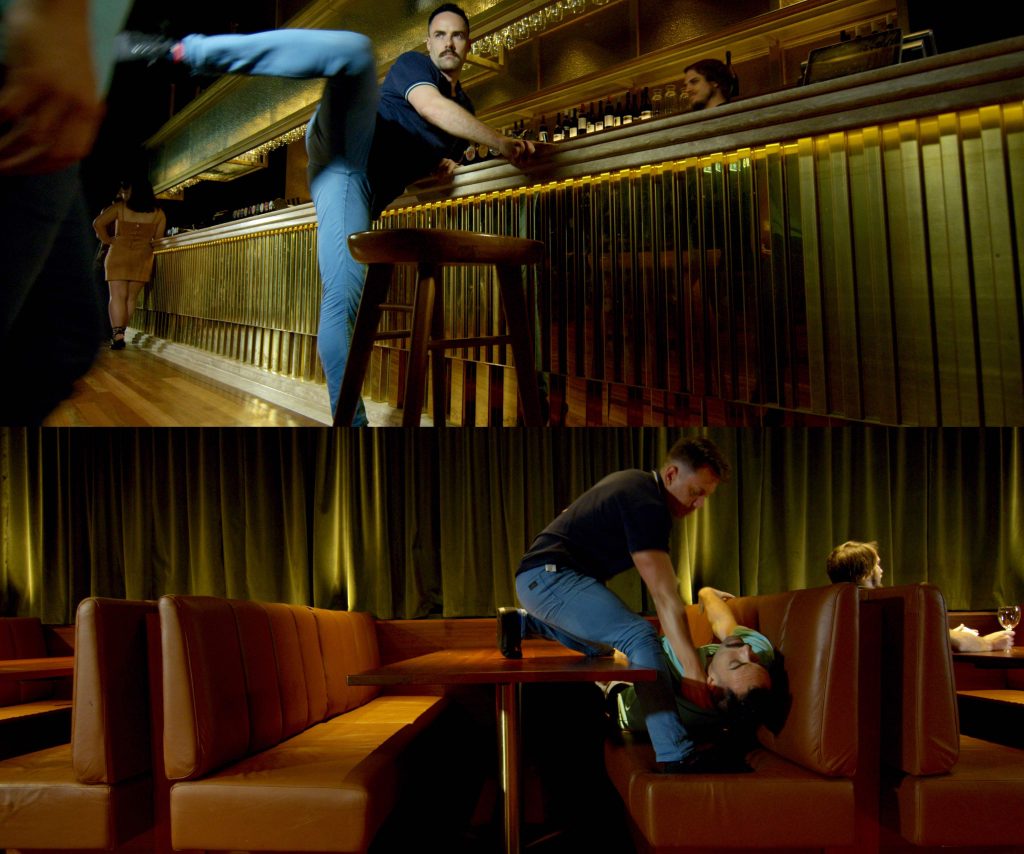
LOVE SONG is a story of a perception in a relationship of constant flux, where deception and emotional manipulation occurs, implemented for each persons’ agenda. Featuring dancers Richard Causer and Anthony Trojman as two men in the ever shifting relationship, LOVE SONG unfolds in a parallel structure, highlighting two sides of a relationship that unfold concurrently.
Along the way, several challenges, including a shift from a traditional cinematic aspect ratio of 2.39:1, (or CinemaScope), allowed the investigation to lead rather than remaining fixed on the original idea, and opened up the idea of presenting two stories at once to investigate how a parallel tandem structure as a split-screen story could enable a deeper exploration of the role of perception in conveying the relationship between two dancers. While editing was initially a secondary aspect of this investigation, it eventually became a prominent element as the parallel structure presented problem solving challenges, requiring new aesthetic and editing decisions.
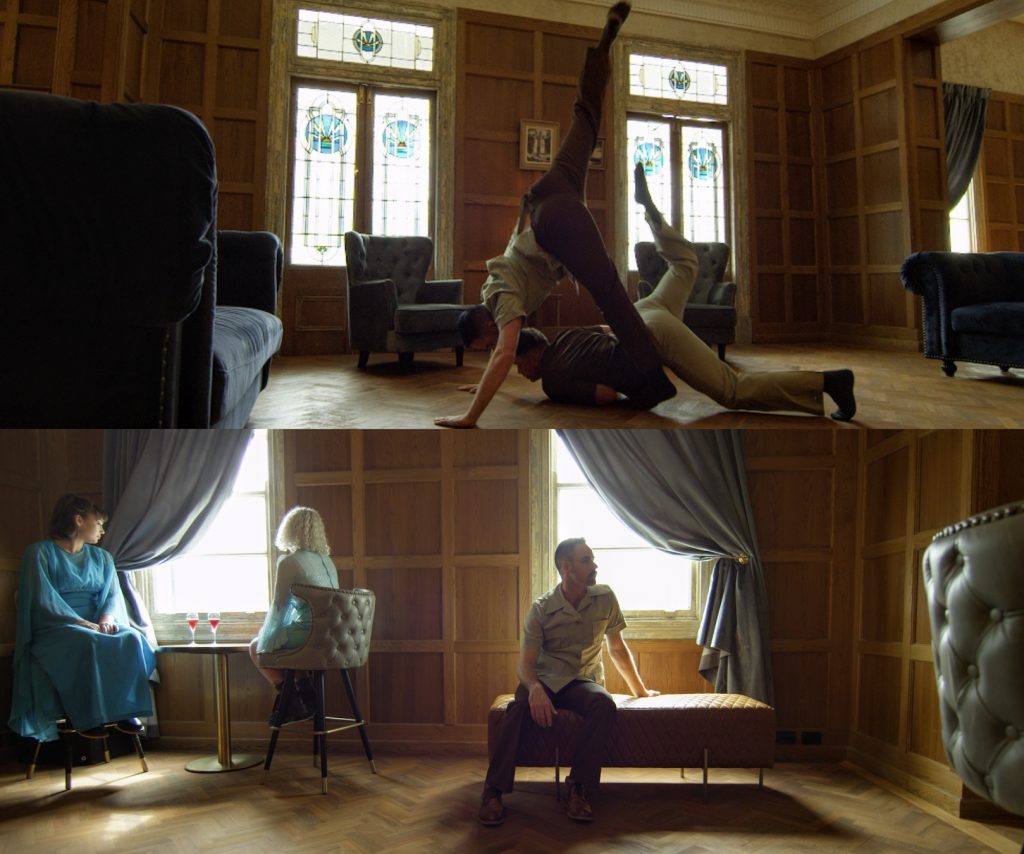
The techniques used to present these two perspectives that occur in duality range from subtle, to oppositional in style to show contrasting stages of the story and chronology manipulated by: cinematography styles, editing techniques, and with some consideration of location.

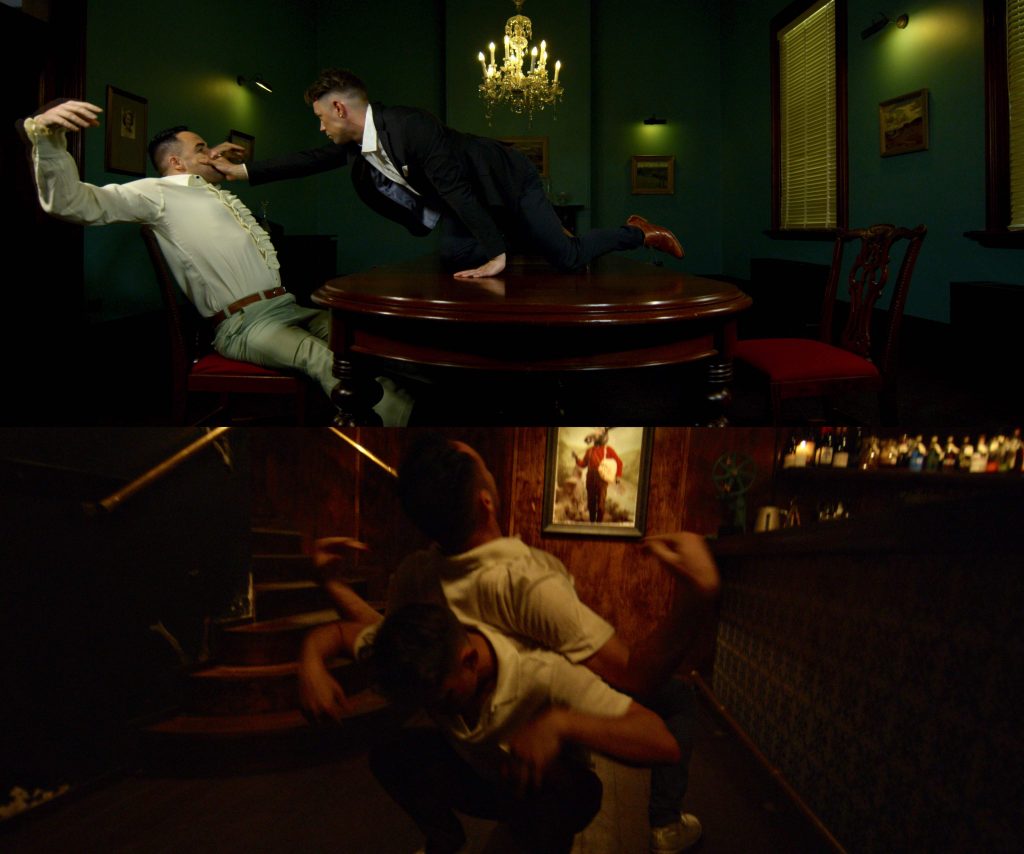
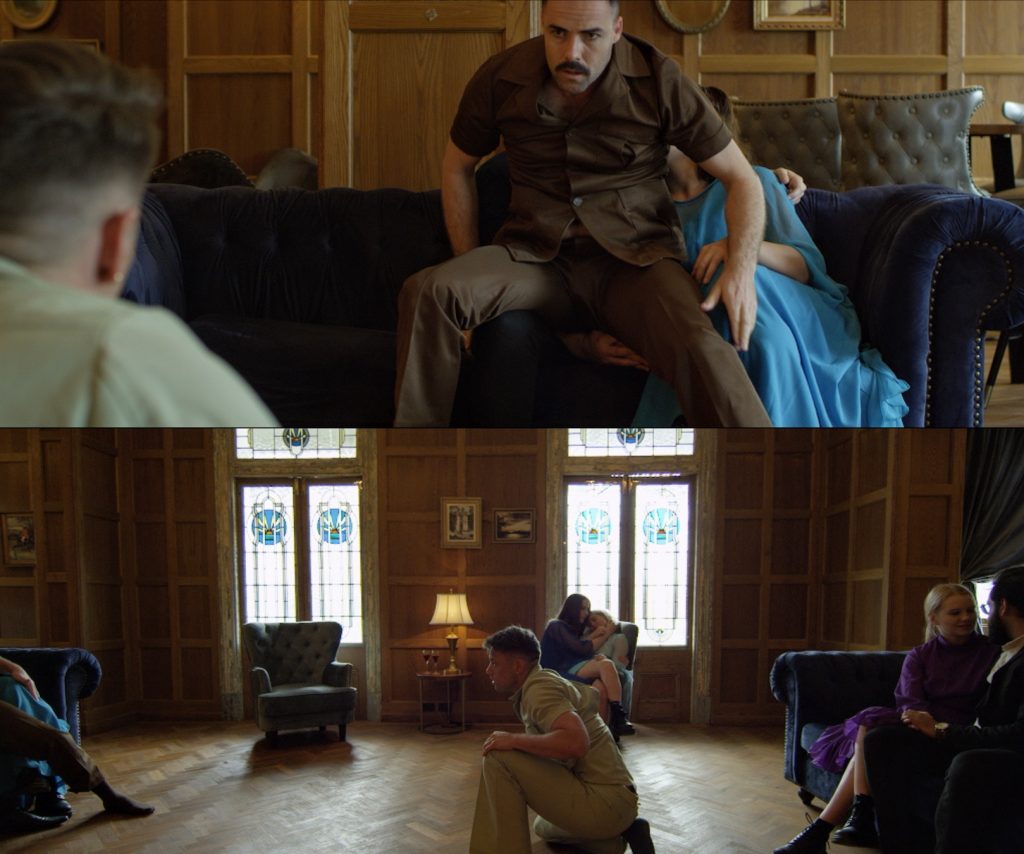
The idea to present LOVE SONG in parallel structure opened up the idea to enhance the idea of alternative perspectives in a relationship and provide the viewer alternative perceptions of the characters and story. While each upper and lower frames occur individually the audience may wish to just follow one story, however, both stories are ideally absorbed concurrently – permitting the viewer’s eye to follow what they wish and their ‘perception’ to inform their experience of the story.
Below: stills showing the parallel structure that eventuated.
Cinematography by Saroj Kumar Chauhan, Hair and Makeup by Amelia Le-Bherz, and Score by Ken Evans for Tycho Sound Design.
